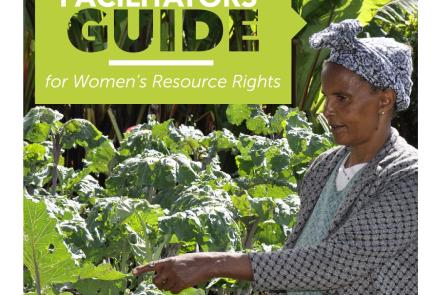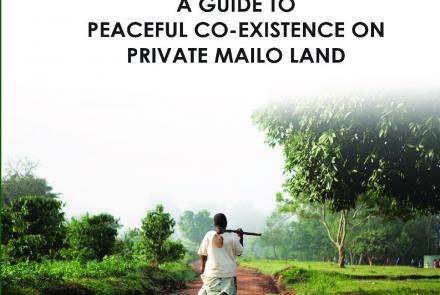Rural Urban Linkages for food security and infrastructure development
Discussions at UN-Habitat and the ECOSOC Integration Segment on Sustainable Urbanization 2014 have concluded that urban and rural should not be seen as separate and independent entities. They should be seen as a continuum and the linkages should be further strengthened as any rural or urban development affects the other – either in a positive or a negative way. Economic and social progress in urban areas can have positive and negative impacts on rural jobs, markets, livelihoods, the climate and the natural environment in rural areas etc. and vice versa. The national law normally applies for urban and rural areas particularly on land tenure issues. Governance affects both areas as well. Tenure governance, therefore, should also be considered within the rural-urban nexus. Within the context of the Voluntary Guidelines on the Governance of Tenure (VGGT), rural, urban and peri-urban areas are also linked through the food supply chain. Rural urban linkages create complex systems requiring complex and coordinated response mechanisms to ensure that the inextricable interdependence of the two entities can be sustainable and reinforce each other in terms of development.
Goal 11.a of the sustainable Development Goals (Agenda 2030) states as follows: “support positive economic, social and environmental links between urban, peri-urban and rural areas by strengthening national and regional development planning.” In this context therefore, Land is an Engine for growth and prosperity, enabling the sustainable symbiotic coexistence of the urban and rural inhabitants. For resource dependent communities, land is a factor of production and sustains their livelihoods creating markets through growing urbanization. For the urban dwellers, land provides the basis for human settlements and the growing urban farming as a livelihood option, promoting agricultural value chains, and thus strengthening the interdependence of the urban and rural inhabitants. Planning for urban growth and working to provide land, infrastructure, and services for the poor is the basis for economic transformation and growth.
According to Uganda’s 2016 census report, 70.2% of the Uganda’s poor people live in rural areas with agriculture as the main source of income and employment. To that adds the increasing number of under- and malnourished people both in rural and increasingly urbanized environments with drastic consequences on human development. Three key questions emerge in this regard:
- What is the role of cities, market towns and their peripheries in ensuring national food security?
- What has this to do with land, its use, access to it and the respective rights?
- What should the response be to the existing diversity of tenure arrangements (range of land rights) in urban and peri-urban areas that may not integrated into the legal system of land administration but impact on agricultural productivity and therefore food security?
Food supply chains intertwine rural and urban areas. Not only do urban populations depend on agricultural production in rural areas. It is also true that increasing parts of rural populations depend on food processing and other activities of the food supply chain that take place in urban and peri-urban areas. In addition to the formal food supply chain, a broad range of informal food processing and selling activities takes place in urban and peri-urban areas of developing countries. All these activities that contribute to food security, including all the transport involved, have one thing in common: They need access to land as do all the people working in the food supply chain who need land for housing, infrastructure and services.
Furthermore, effective land governance requires:
- recognizing and respecting a plurality of tenure systems,
- identifying and adopting intermediate forms of tenure arrangements, and
- adopting alternative and affordable forms of land administration and land records alongside conventional land administration systems.
The VGGT provide some framework or guidance on regulated spatial planning, land readjustment approaches, fair compensation, valuation and resolution of disputes over tenure rights.
All investments in urban, peri-urban and rural areas needed to ensure food security require (access to) land and bear the risk of negatively affecting the poor and the environment, in particular in an environment marked by weak governance and poor land administration and management.
Key Intervention areas
Strategic Objective 1: To link national and metropolitan regional initiatives and policy processes through facilitation of partners engagement on the nexus between rural-urban linkages and land tenure security in the context of food security.
Key activities
Two partner dialogue platforms will be held for knowledge sharing and strategy development towards building a more coherent response mechanism that will enable increased influence at the local, regional and national level in considering land tenure security as one of the key pillars to food security taking into account the emergent rural urban linkages.
- Mapping of partners and key stakeholders
This project envisages on building onto what already exists. This requires a mapping of what partners are engaging in taking into account the dimensions of their engagement through which partner niches will be established. It is envisaged that this process will lead to dynamism and vibrancy of the platform created as each partner will bring knowledge skills and experience for learning and creation of a knowledge base.
- Holding of partner dialogue platforms
Two partner dialogue platforms will be held for knowledge sharing and strategy development towards building a more coherent response mechanism that will enable increased influence at the local, regional and national level in considering land tenure security as one of the key pillars to food security taking into account the emergent rural urban linkages.
- Holding joint advocacy on agreed main messages to promote the nexus between tenure security and the rural-urban continuum in the context of food security.
Development of joint messaging is critical to gaining traction in determining the challenges posed by tenure insecurity in the impact pathways to food security. There is power in raising a unified voice at national and local level.
Strategic Objective 2: To promote learning, knowledge management and awareness raising through research and documentation of identified land governance needs in the rural-urban continuum.
Key activities
- Scoping study to determine the existing gaps based on agreed parameters by partners.
A scoping study will be carried out to consider the existing tools, their application and the identification of existing gaps for research.
- Building resources on urban land development
Collecting and packaging existing knowledge and research for sharing and undertaking further research on the identified research gaps. This will include compilation of existing legal, policy and institutional frameworks for rural – urban land.
- Documentation of existing best practices among partners on the nexus between land tenure security and the rural-urban continuum in the context of food security.
The Best practices on land governance and food security will be used to share knowledge and learning among partners.
- Development of a common knowledge sharing strategy at various governance levels
It is important that partners agree on a common framework for knowledge sharing and learning as a mechanism to increase the uptake of the best practices and their application at scale. It will also foster the sharing of new knowledge and manage how that knowledge will be translated into practice at different governance levels.





